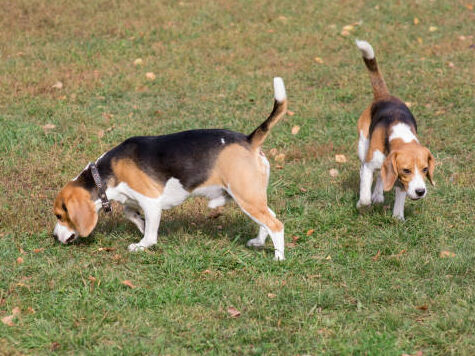Outdoor Housing of Laboratory Dogs: Effects on Activity, Behaviour and Physiology

Laboratory dogs are mainly housed indoors and outdoor housing is often considered to be an insecure and uncontrollable alternative. This study aimed to assess the effects of outdoor housing of laboratory dogs on their general physiology, activity and activity-related behaviours. Eight male Beagles dogs were randomised into two groups and housed pair wise in indoor housing (IH, 11 m2), with or without access to an outdoor kennel (OH, 11 m2) during daytime. Activity (steps per hour), behaviour, and usage of outdoor facilities were recorded during 6 weeks in a cross-over design. In addition, the dogs were weighed once weekly and blood samples were taken three times a week to monitor physiological parameters for kidney, liver, pancreas and immune system functions. Four of the dogs were housed with access to outdoor kennel prior to the study and the other four had only been housed indoors. The effect of housing type and previous housing was analysed. OH resulted in a significantly higher activity level, a higher frequency of moving and a lower frequency of passive behaviour. Alanine amino transferase, white blood cell count, granulocytes and neutrophils were significantly higher in IH, while cholesterol was lower, compared to OH, although all physiological parameters were kept within normal ranges. The dogs spent on average 162 ± 11 out of 500 possible min/day outside and the average frequency of entering the outdoor kennel was 102 ± 7 times per day. The duration of time spent outdoors was significantly longer during the second and third weeks of OH, compared to the first week. In conclusion, laboratory dogs can be housed with access to an outdoor kennel without altering their general physiology. Further, it clearly increased the voluntary activity and activity-related behaviours of the dogs and should therefore be beneficial for their welfare.
Spangenberg, E.M.F., Björklund, L., and Dahlborn, K. (2006). Outdoor housing of laboratory dogs: Effects on activity, behaviour and physiology. Applied Animal Behaviour Science, 98(3-4), 260-276. DOI: 10.1016/j.applanim.2005.09.004
Photo: iStock.com/SergeyTikhomirov
View ResourceTopic(s): Designs that Support Good Welfare, Environment, How Play Yards Impact Welfare, Kennel Design, Play Yards, Research and Teaching